Front Matter
Cover
Springer Undergraduate Mathematics Series
Advisory Board & List of Publist Books
Vector Calculus
Copyright
©1998, Springer-Verlag London Limited
ISBN 3540761802
QA433.M38 1998 515'.63-dc21
LCCN 97-41191
Second Indian Reprint 2008
ISBN 978-81-8128-295-8
Preface
Table of Contents
1 Vector Algebra
1.1 Vectors and scalars
1.1.1 Definition of a vector and a scalar
1.1.2 Addition of vectors
1.1.3 Components of a vector
1.2 Dot product
1.2.1 Applications of the dot product
EXERCISES
1.3 Cross product
1.3.1 Applications of the cross product
1.4 Scalar triple product
1.5 Vector triple product
1.6 Scalar fields and vector fields
Summary of Chapter 1
EXERCISES
2 Line, Surface and Volume Integrals
2.1 Applications and methods of integration
2.1.1 Examples of the use of integration
2.1.2 Integration by substitution
2.1.3 Integration by parts
2.2 Line integrals
2.2.1 Introductory example: work done against a force
2.2.2 Evaluation of line integrals
2.2.3 Conservative vector fields
2.2.4 Other forms of line integrals
EXERCISES
2.3 Surface integrals
2.3.1 Introductory example: flow through a pipe
2.3.2 Evaluation of surface integrals
2.3.3 Other forms of surface integrals
2.4 Volume integrals
2.4.1 Introductory example: mass of an object with variable density
2.4.2 Evaluation of volume integrals
Summary of Chapter 2
EXERCISES
3 Gradient, Divergence and Curl
3.1 Partial differentiation and Taylor series
3.1.1 Partial differentiation
3.1.2 Taylor series in more than one variable
3.2 Gradient of a scalar field
3.2.1 Gradients, conservative fields and potentials
3.2.2 Physical applications of the gradient
EXERCISES
3.3 Divergence of a vector field
3.3.1 Physical interpretation of divergence
3.3.2 Laplacian of a scalar field
3.4 Curl of a vector field
3.4.1 Physical interpretation of curl
3.4.2 Relation between curl and rotation
3.4.3 Curl and conservative vector fields
Summary of Chapter 3
EXERCISES
4 Suffix Notation and its Applications
4.1 Introduction to suffix notation
4.2 The Kronecker delta \delta_ij
4.3 The alternating tensor \epsilon_ijk
4.4 Relation between \epsilon_ijk and \delta_ij
EXERCISES
4.5 Grad, div and curl in suffix notation
4.6 Combinations of grad, div and curl
4.7 Grad, div and curl applied to products of functions
Summary of Chapter 4
EXERCISES
5 Integral Theorems
5.1 Divergence theorem
5.1.1 Conservation of mass for a fluid
5.1.2 Applications of the divergence theorem
5.1.3 Related theorems linking surface and volume integrals
EXERCISES
5.2 Stokes's theorem
5.2.1 Applications of Stokes's theorem
5.2.2 Related theorems linking line and surface integrals
Summary of Chapter 5
EXERCISES
6 Curvilinear Coordinates
6.1 Orthogonal curvilinear coordinates
6.2 Grad, div and curl in orthogonal curvilinear coordinate systems
6.2.1 Gradient
6.2.2 Divergence
6.2.3 Curl
EXERCISES
6.3 Cylindrical polar coordinates
6.4 Spherical polar coordinates
Summary of Chapter 6
EXERCISES
7 Cartesian Tensors
7.1 Coordinate transformations
7.2 Vectors and scalars
7.3 Tensors
7.3.1 The quotient rule
EXERCISES
7.3.2 Symmetric and anti-symmetric tensors
7.3.3 Isotropic tensors
7.4 Physical examples of tensors
7.4.1 Ohm's law
7.4.2 The inertia tensor
Summary of Chapter 7
EXERCISES
8 Applications of Vector Calculus
8.1 Heat transfer
8.2 Electromagnetism
8.2.1 Electrostatics
8.2.2 Electromagnetic waves in a vacuum
EXERCISES
8.3 Continuum mechanics and the stress tensor
8.4 Solid mechanics
8.5 Fluid mechanics
8.5.1 Equation of motion for a fluid
8.5.2 The vorticity equation
8.5.3 Bernoulli's equation
Summary of Chapter 8
EXERCISES
Solutions
Solutions to Exercises for Chapter 1
Solutions to Exercises for Chapter 2
Solutions to Exercises for Chapter 3
Solutions to Exercises for Chapter 4
Solutions to Exercises for Chapter 5
Solutions to Exercises for Chapter 6
Solutions to Exercises for Chapter 7
Solutions to Exercises for Chapter 8
Back Matter
Index
Back Cover
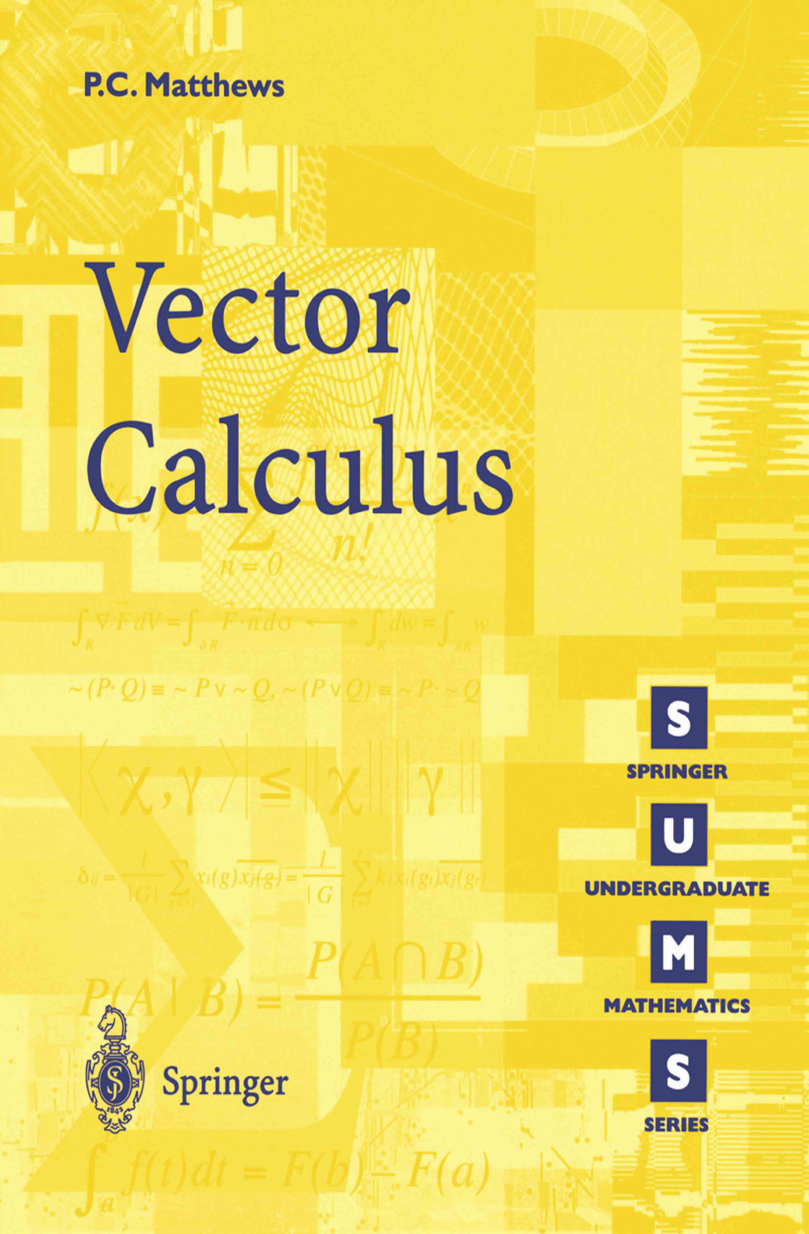
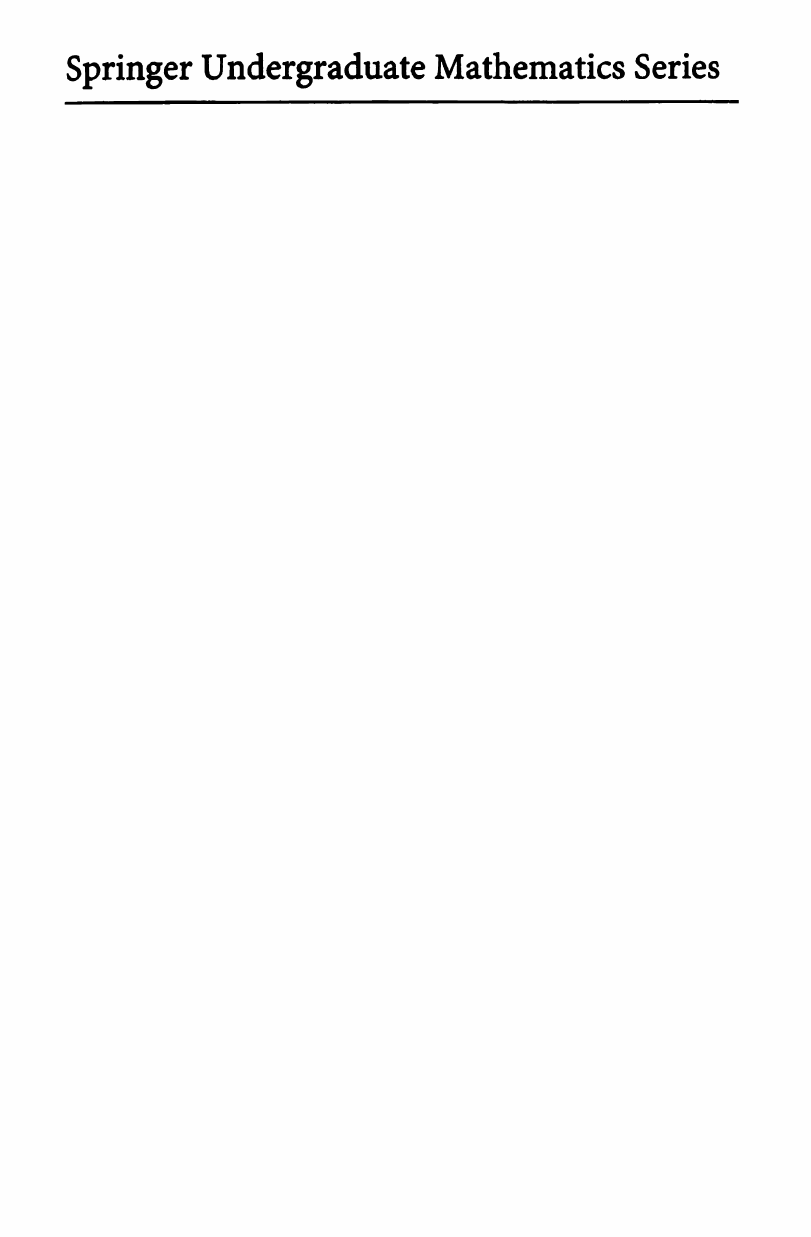
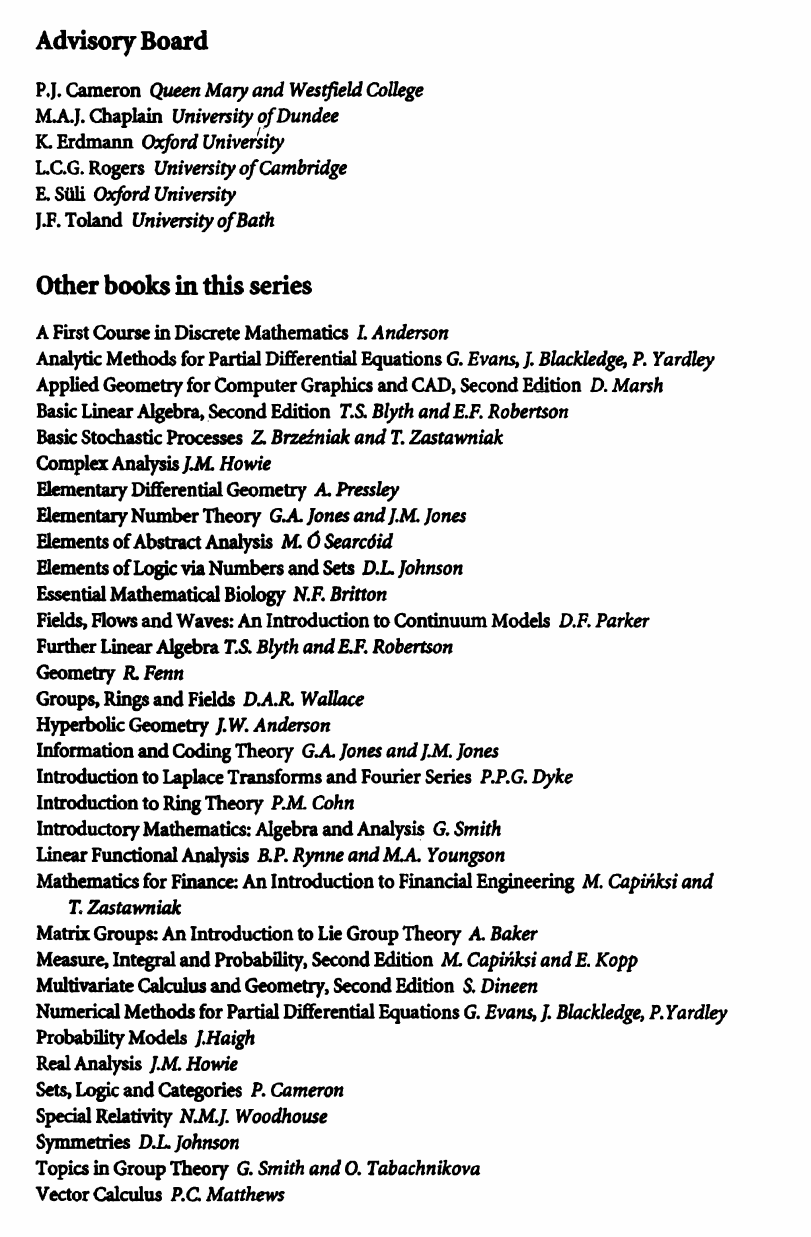


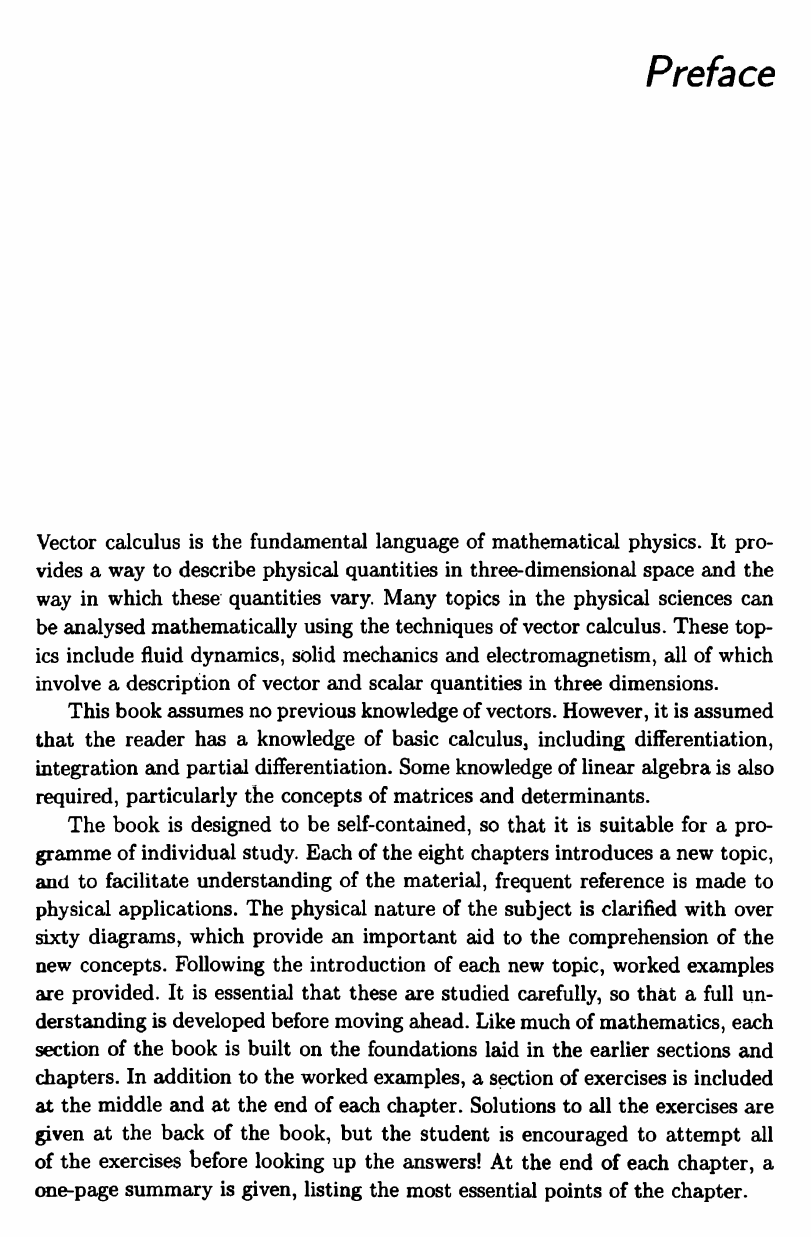
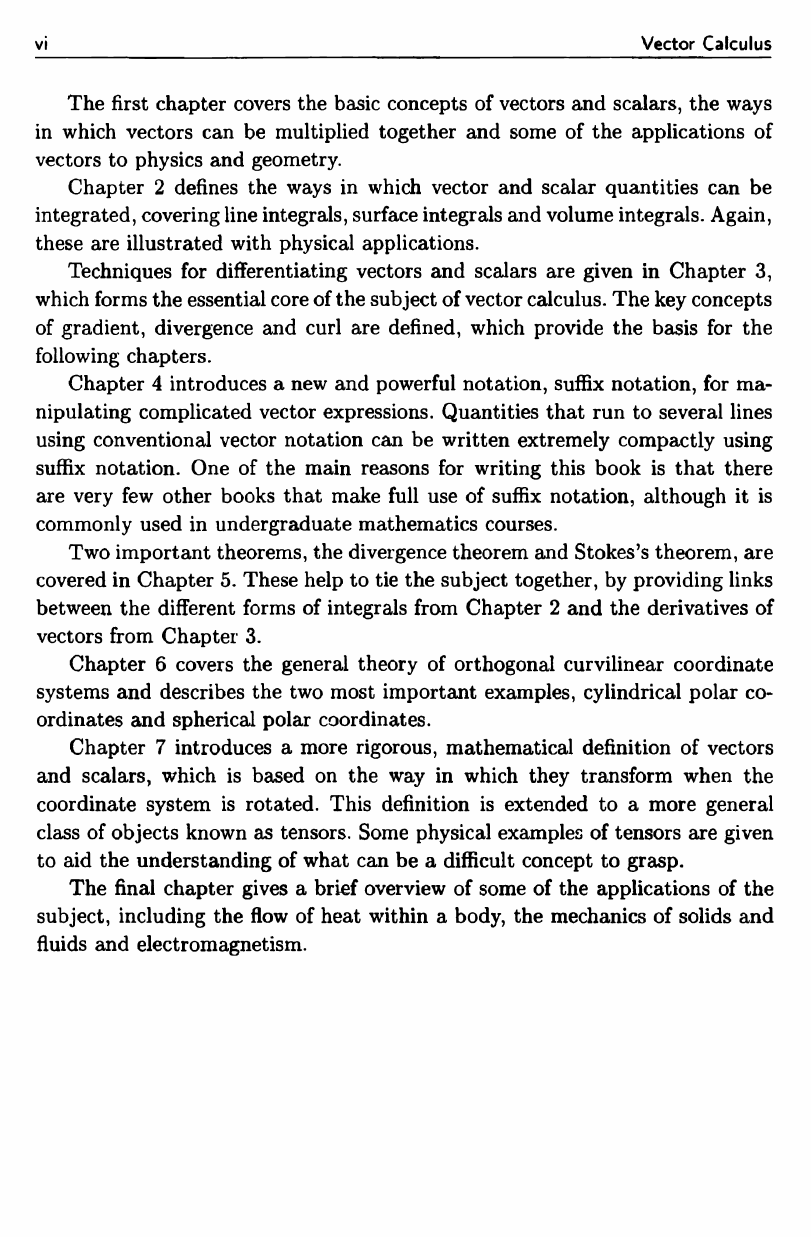
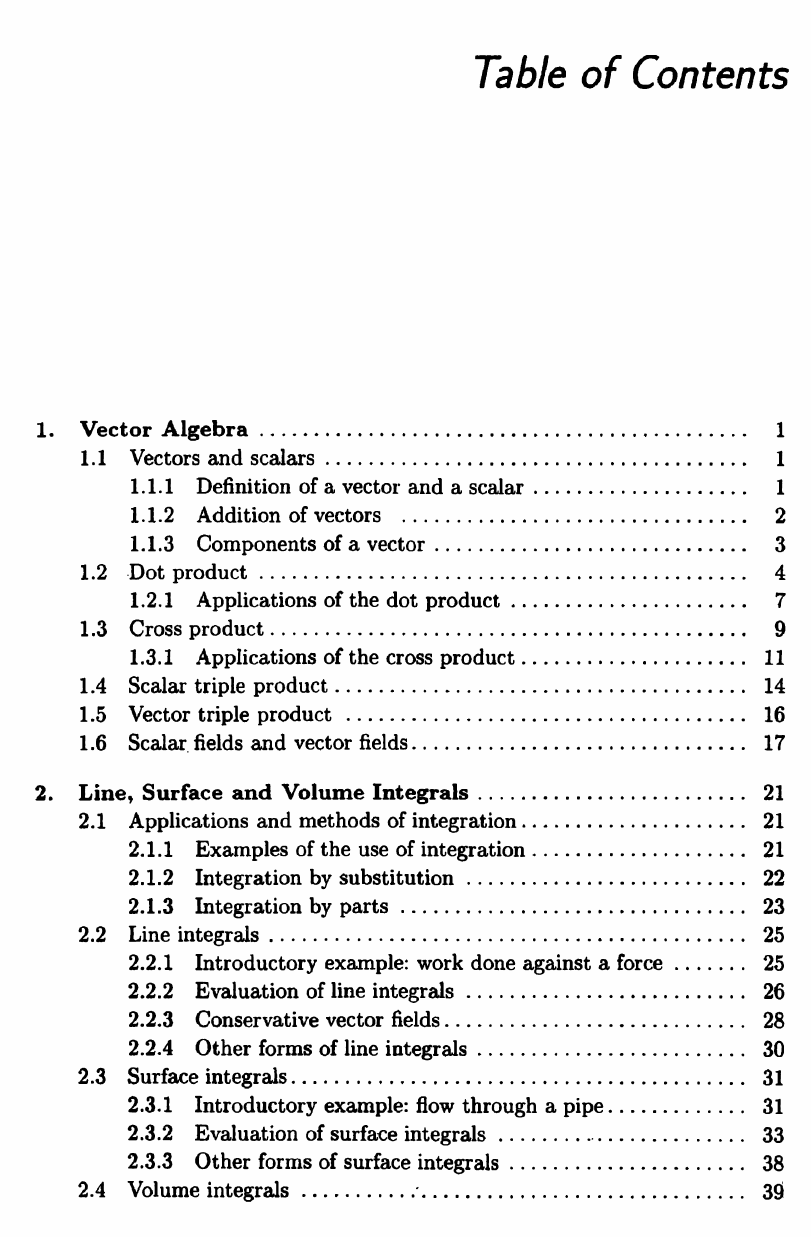








 2023年江西萍乡中考道德与法治真题及答案.doc
2023年江西萍乡中考道德与法治真题及答案.doc 2012年重庆南川中考生物真题及答案.doc
2012年重庆南川中考生物真题及答案.doc 2013年江西师范大学地理学综合及文艺理论基础考研真题.doc
2013年江西师范大学地理学综合及文艺理论基础考研真题.doc 2020年四川甘孜小升初语文真题及答案I卷.doc
2020年四川甘孜小升初语文真题及答案I卷.doc 2020年注册岩土工程师专业基础考试真题及答案.doc
2020年注册岩土工程师专业基础考试真题及答案.doc 2023-2024学年福建省厦门市九年级上学期数学月考试题及答案.doc
2023-2024学年福建省厦门市九年级上学期数学月考试题及答案.doc 2021-2022学年辽宁省沈阳市大东区九年级上学期语文期末试题及答案.doc
2021-2022学年辽宁省沈阳市大东区九年级上学期语文期末试题及答案.doc 2022-2023学年北京东城区初三第一学期物理期末试卷及答案.doc
2022-2023学年北京东城区初三第一学期物理期末试卷及答案.doc 2018上半年江西教师资格初中地理学科知识与教学能力真题及答案.doc
2018上半年江西教师资格初中地理学科知识与教学能力真题及答案.doc 2012年河北国家公务员申论考试真题及答案-省级.doc
2012年河北国家公务员申论考试真题及答案-省级.doc 2020-2021学年江苏省扬州市江都区邵樊片九年级上学期数学第一次质量检测试题及答案.doc
2020-2021学年江苏省扬州市江都区邵樊片九年级上学期数学第一次质量检测试题及答案.doc 2022下半年黑龙江教师资格证中学综合素质真题及答案.doc
2022下半年黑龙江教师资格证中学综合素质真题及答案.doc